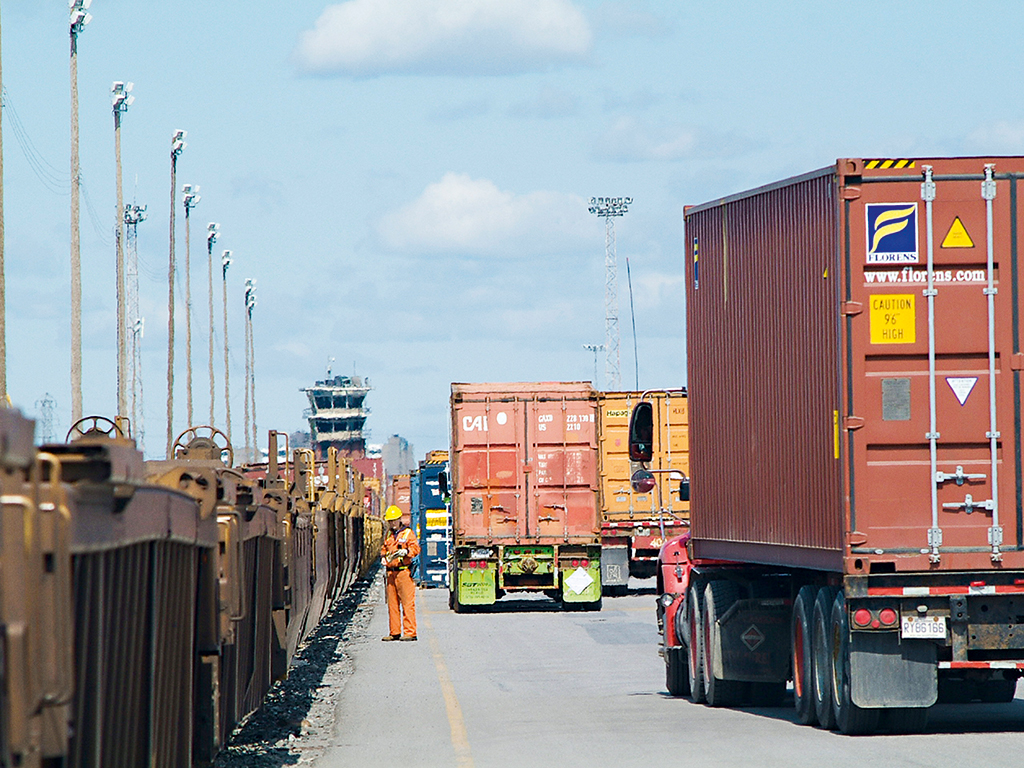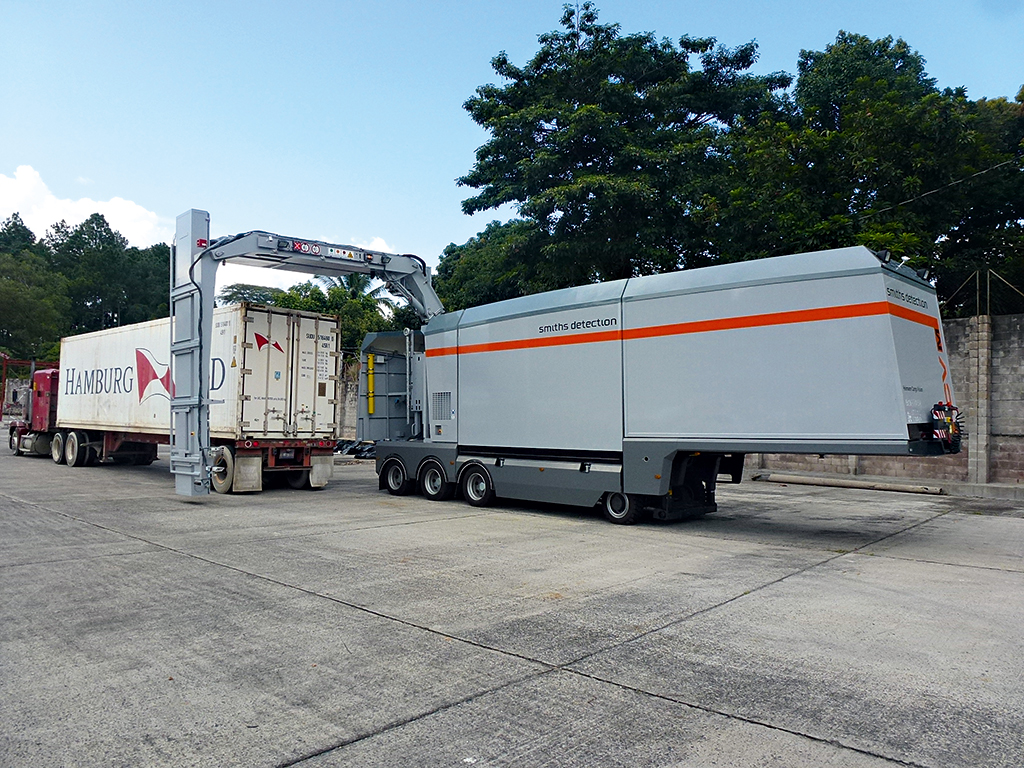EU customs’ deployment of technology toughens border control
The use of technology, including involvement in research and development, is pivotal for modern European customs administrations, says EU official Wil van Heeswijk

The EU has put together a Customs Detection Technology Expert Group in order to enhance security in border control
Customs is one of the oldest public administrations. It has a long tradition of controlling goods in order to collect duties, taxes and revenues at the border. Since 9/11, and other terrorist attacks in Europe and elsewhere, security has become a top priority for European customs. The security and safety of the EU – its member states and citizens – depends on each and every single point of entry of goods into the EU. If customs fail to tackle risks along the EU’s external borders, the customs union and the single market will become unsustainable.
In one year, EU customs authorities handle:
39m
entry summary declarations
139m
import declarations
105m
export declarations
17m
transit declarations
EU customs are constantly present at our external borders and have a longstanding knowledge of the goods moved within the supply chain. That makes them one of the primary authorities able to detect and prevent illicit and dangerous goods entering and leaving the EU.
In 2012, the EU customs administrations processed 39 million entry summary declarations (ENSs), 139 million import declarations, 105 million export declarations and 17 million transit declarations. The result is that, on average, eight declarations per second were handled by EU customs administrations. The total value of customs duties collected and transferred into the EU budget was €16.25bn.
Managing common risks
The EU has made major efforts to integrate security into customs policy and has put in place a common risk management framework (CRMF). It comprises: the establishment of common risk criteria for the identification and control of high-risk goods movements; the creation of Authorised Economic Operators aimed at creating a customs-trade partnership to secure and facilitate legitimate trade; and the implementation of pre-arrival/pre-departure declarations (the ENSs previously mentioned), so security risk analysis can be based on cargo information submitted electronically by traders prior to arrival in, or departure from, the EU.
The deployment of detection technologies complements the CRMF. It also helps the EU customs administrations meet their strategic challenges of effectively managing associated risks with available resources, combining effective and efficient controls with the facilitation of legitimate trade.
In order to help the EU customs administrations meet these challenges, a Customs Detection Technology Expert Group has been established under the Customs 2013 Programme. The group commenced work in January 2011 and consists of customs detection technology experts from a number of member states, chaired by the European Commission.
The main roles of this expert group are a) to provide a platform for information sharing between customs technology experts, and b) to define the needs for new and improved technologies that would enable modern customs administrations to detect a variety of illicit goods, and to ensure both the security and facilitation of legitimate global supply chains.
During its first mandate, which ran from 2011 to 2013, the group has: compiled a list of available detection equipment in the EU member states; linked the use of detection equipment to border type, mode of transport and risk category; delivered short, mid and long-term recommendations that will shape the future of the use of detection technology; and provided guidance on the construction of detection architectures.
These documents constitute a solid basis for discussions of the EU customs administrations with the EU security industry, research institutes and academia. Such discussions should address future R&D activities in line with specific customs requirements for detection and control equipment, based on evolving threats, and ever-changing methods of smuggling and concealment.
In fact, decision makers in customs administrations are faced with difficult choices when it comes to procurement of detection technologies. An array of illicit goods and materials are smuggled across borders, often through sophisticated means of concealment, sometimes within legitimate shipments.
Research and development
As global trade expands, there is a growing requirement to provide supply chain security assurance. Budgets for equipment and support are constantly under pressure in these difficult economic times. It is vital therefore that detection capability is optimised through the use of new and existing technologies, including operating in a parallel or sequential manner in a multi-disciplinary approach.

The Commission considers security research and development to be of fundamental importance in enabling and supporting the European Union customs policy to enhance supply chain security and trade facilitation.
The research and development of detection technologies is a complex process requiring an in-depth understanding of end-user needs, including operational goals and real-life constraints. Frequently, end users are forced to choose detection technologies that do not fully meet their needs, but which provide the best available solution.
Security research funding, such as the European Commission’s Seventh Framework Programme, has provided opportunities for the EU customs administrations to engage as end users with academia, industry and research bodies to develop innovative technologies that will meet their specific requirements. There remains, however, a need to evaluate existing detection technology applications and techniques on a more granular level, with a view to improving detection capability across the broad range of operational environments where customs responsibilities lie.
Active projects
The EU customs administrations are actively involved in a number of on-going research and development projects. The SNIFFER project, for example, aims to complement the work of sniffer dogs by mimicking their olfactory range. Its scope includes the detection of people hidden in containers, and the detection of illegal substances in suitcases or on baggage belts.
Secondly, the MODES Special Nuclear Materials project aims to develop a mobile, modular detection system for radioactive and Special Nuclear Materials, including shielded and difficult-to-detect sources. Thirdly, the ACXIS project aims to develop a new system for the analysis of X-ray cargo images based on a reference image data base, significantly expanding the capabilities of cargo inspection at customs offices. Security research will continue under the Horizon 2020 programme, while two important topics related to the inspection of large volume freight and the development of an enhanced non-intrusive body scanner are part of the 2014-15 work programme.
The Customs Detection Technology Expert Group has identified a number of areas where existing detection technologies are insufficient for the detection of current threats. It has also highlighted areas where operational performance can be improved through better training, sharing of information and best practice. EU programmes such as Customs 2020, and security research under Horizon 2020 can be availed of to reach these goals. The Commission will continue its proactive approach towards the use of modern technologies in the area of risk management and detection equipment.
In the European Union, we are fully committed to enhancing the security of the international supply chain in line with international standards. We feel the need to cooperate worldwide to implement coordinated policies and actions to fight terrorism and other threats successfully.
From a detection technology point of view, supply chain security should not rely on one single technology, but use a combination of different technologies, combined with risk management based on reliable, timely and adequate information.














